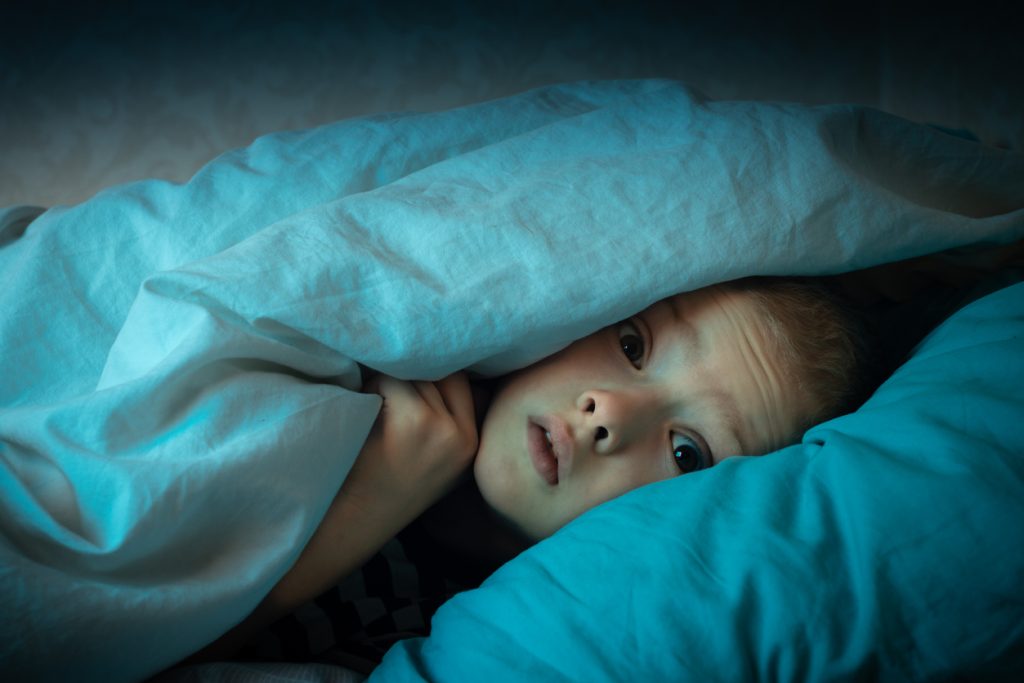Understanding What to Do for Night Terrors and Nightmares

A child’s sleep is so precious to them for growth and development and to parents for their sanity. Wakeful nights throw everyone out of whack. But few things are scarier than being woken in the middle of the night by the blood-curdling scream of a child in distress. In our groggy state, we wonder if they are being subjected to an exorcism while a jolt of adrenaline sends us flying down the hall to their bedsides.
More likely, they’re having a bad dream or a night terror. But which? The quickest way to differentiate between the two is notice who is the one that is scared (I kid you not):
- If the parent is scared, it’s a night terror
- If the child is scared, it’s a nightmare
Check out the differences between these two nighttime dramas so you’ll understand the difference and respond appropriately.
Nightmares and Night Terrors
Nightmares
We all know what nightmares are, right? Bad dreams where you’re being chased by a rabid dog, or you’re lost in a strange school and can’t find your classroom can be SCARY! You wake up in the middle of the night (between 2 am and 6 am), recalling the dream and still feel frightened by the thoughts. Nightmares happen during REM sleep, the so-called ‘dream phase’ of sleep.
What to Do?
Your child will be awake and upset, so you can comfort them and help them realize it was just their imagination, that dreams are not real and that they are safe now. Dreaming is a way of ordering the experiences and memories of the day. They serve as a practice ground to experiment with how we might handle life’s problems—they are rehearsed responses in our sleep.
Night Terrors
While every child will have nightmares, only some children will experience the sleep disorder called night terrors. Research is not conclusive about why children get night terrors, but it seems to be a sleep disruption related to an increase in brain activity during non-REM or deep sleep. Non-REM is the part of the sleep cycle that happens in the first 90 minutes of falling asleep. If you’re running to your child before you’ve even tucked into bed yourself, its probably a night terror. Your child will be FRANTIC, have his or her eyes open but you can see they are in zombie-state and non-responsive to you. They are actually still asleep (like sleep walking) and while they are wildly agitated and seemingly scared to death, they will not recollect this experience when they wake. It’s just unbearable for parents to watch.
What to Do?
Similar to strategies for sleepwalking, it’s best to not wake your child. Instead, steady yourself, talk calmly if you must talk, and assure them verbally that they are safe. Don’t touch them, but keep them safe by removing anything they may flay against, step on or would cause harm. Put up a gate and lock doors if they are prone to moving about. You can mention these episodes to your pediatrician, but they will likely advice you wait it out until they outgrow it in the adolescent years. Until then, keep bedtime routines consistent.















